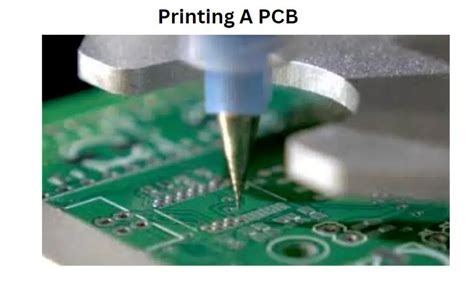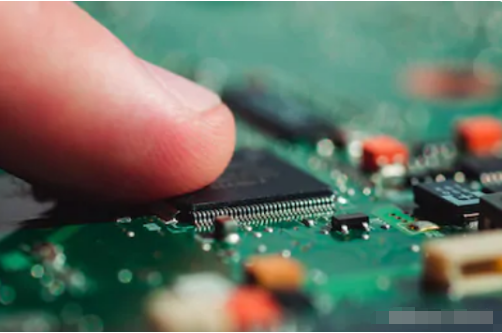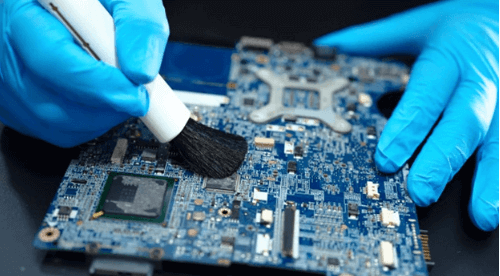High density rogers pcb circuits board
Advantages Of High Density Rogers PCB In Modern Electronics
High-density Rogers PCB circuits boards have emerged as a pivotal component in the realm of modern electronics, offering a multitude of advantages that cater to the ever-evolving demands of technology. As electronic devices become increasingly compact and sophisticated, the need for efficient and reliable circuit boards has never been more critical. High-density Rogers PCBs, known for their superior performance and versatility, are at the forefront of meeting these requirements.
One of the primary advantages of high-density Rogers PCBs is their exceptional thermal management capabilities.
In electronic devices, heat dissipation is a significant concern, as excessive heat can lead to malfunctions or reduced lifespan of components.
Rogers PCBs are engineered with materials that possess excellent thermal conductivity, allowing for efficient heat distribution across the board.
This characteristic is particularly beneficial in high-power applications, where maintaining optimal operating temperatures is crucial for performance and reliability.
In addition to thermal management, high-density Rogers PCBs offer remarkable electrical performance.
The materials used in these boards exhibit low dielectric loss, which translates to minimal signal loss and distortion. This feature is essential in high-frequency applications, such as radio frequency (RF) and microwave circuits, where signal integrity is paramount. The ability to maintain signal clarity and strength ensures that devices function with precision and accuracy, a necessity in today’s fast-paced technological landscape.
Moreover, the compact nature of high-density Rogers PCBs allows for greater design flexibility.
As electronic devices shrink in size, the need to pack more functionality into smaller spaces becomes imperative. Rogers PCBs enable designers to incorporate more components and intricate circuitry within a limited area, without compromising on performance. This compactness not only facilitates the creation of smaller and lighter devices but also contributes to cost savings in terms of materials and manufacturing processes.
Transitioning to another significant advantage, the durability and reliability of high-density Rogers PCBs cannot be overstated.
These boards are designed to withstand harsh environmental conditions, including extreme temperatures, humidity, and mechanical stress.
This robustness makes them ideal for use in a wide range of applications, from consumer electronics to aerospace and military technologies. The reliability of Rogers PCBs ensures that devices can operate consistently over extended periods, reducing the likelihood of failures and the need for frequent maintenance.
Furthermore, the use of high-density Rogers PCBs aligns with the growing emphasis on sustainability in electronics manufacturing. The materials used in these boards are often more environmentally friendly compared to traditional options, contributing to reduced ecological impact.
Additionally, the efficiency and longevity of Rogers PCBs mean that devices can have a longer lifecycle, decreasing the frequency of replacements and electronic waste generation.
In conclusion, the advantages of high-density Rogers PCB circuits boards in modern electronics are manifold. Their superior thermal management, exceptional electrical performance, compact design, durability, and environmental benefits make them an indispensable choice for contemporary electronic applications. As technology continues to advance, the role of Rogers PCBs in facilitating innovation and efficiency will undoubtedly remain significant, underscoring their importance in the ever-evolving landscape of modern electronics.
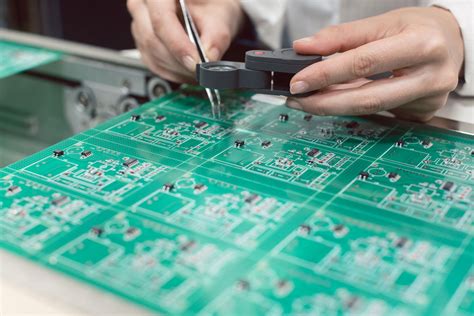
Design Challenges In High Density Rogers PCB Manufacturing
In the realm of modern electronics, the demand for compact, efficient, and high-performance devices has led to the increasing use of high-density Rogers PCB (Printed Circuit Board) circuits. These advanced circuit boards are renowned for their superior electrical properties, making them ideal for high-frequency applications such as telecommunications, aerospace, and advanced computing.
However, the design and manufacturing of high-density Rogers PCBs present a unique set of challenges that require careful consideration and expertise.
One of the primary challenges in designing high-density Rogers PCBs is managing the thermal properties
. Rogers materials are chosen for their excellent dielectric properties, which are crucial for maintaining signal integrity at high frequencies. However, these materials can also exhibit different thermal characteristics compared to traditional FR-4 substrates. As a result, designers must meticulously plan the thermal management strategy to ensure that heat dissipation is effectively handled. This often involves the integration of thermal vias, heat sinks, and careful layer stack-up design to prevent overheating and ensure reliable performance.
Moreover, the miniaturization of components in high-density designs necessitates precise control over the impedance of the traces.
Impedance control is critical in high-frequency applications to minimize signal reflection and loss. Achieving the desired impedance requires accurate modeling and simulation during the design phase, as well as stringent manufacturing tolerances.
The use of advanced software tools for electromagnetic simulation can aid designers in predicting and optimizing the impedance characteristics of the PCB layout, thereby enhancing the overall performance of the circuit.
Transitioning from design to manufacturing, another significant challenge is the fabrication process itself.
High-density Rogers PCBs often involve complex multilayer structures with fine line widths and small via diameters. The precision required in etching and drilling processes demands state-of-the-art equipment and techniques.
Any deviation from the specified dimensions can lead to performance degradation or even complete failure of the circuit.
Therefore, manufacturers must employ advanced fabrication technologies, such as laser drilling and direct imaging, to achieve the necessary precision and repeatability.
Additionally, the choice of materials and processes must be carefully aligned with the specific requirements of the application.
Rogers materials come in various formulations, each with distinct properties that can affect the performance of the PCB. Selecting the appropriate material involves a thorough understanding of the electrical, thermal, and mechanical demands of the end-use environment. Furthermore, the integration of these materials into the manufacturing process must be meticulously controlled to prevent issues such as delamination or warping, which can compromise the integrity of the circuit.
In conclusion, the design and manufacturing of high-density Rogers PCB circuits are fraught with challenges that require a deep understanding of both the materials and the processes involved.
From managing thermal properties and ensuring impedance control to navigating the complexities of fabrication, each step demands precision and expertise. As technology continues to advance, the ability to overcome these challenges will be crucial in meeting the ever-growing demand for high-performance electronic devices. By leveraging cutting-edge tools and techniques, designers and manufacturers can push the boundaries of what is possible with high-density Rogers PCBs, paving the way for the next generation of electronic innovations.

Applications Of High Density Rogers PCB In Telecommunications
High-density Rogers PCB circuits have become a cornerstone in the telecommunications industry, offering unparalleled performance and reliability.
As the demand for faster and more efficient communication networks continues to grow, these advanced circuit boards play a crucial role in meeting the industry’s evolving needs.
The unique properties of Rogers PCBs, such as their low dielectric constant and minimal signal loss, make them particularly well-suited for high-frequency applications, which are essential in modern telecommunications.
One of the primary applications of high-density Rogers PCBs in telecommunications is in the development of antennas.
Antennas are fundamental components in wireless communication systems, and their performance directly impacts the quality and speed of data transmission.
Rogers PCBs provide the necessary characteristics to support high-frequency signals, ensuring that antennas can operate efficiently and effectively.
This is particularly important in the context of 5G technology, where the demand for high-speed data transfer and low latency is paramount.
By utilizing Rogers PCBs, manufacturers can design antennas that meet these stringent requirements, thereby enhancing the overall performance of telecommunications networks.
In addition to antennas, high-density Rogers PCBs are also extensively used in the fabrication of RF (radio frequency) and microwave circuits.
These circuits are integral to a wide range of telecommunications equipment, including base stations, satellite communication systems, and radar systems.
The ability of Rogers PCBs to maintain signal integrity at high frequencies makes them an ideal choice for these applications. Furthermore, their thermal stability and resistance to environmental factors ensure that the circuits remain reliable even under challenging conditions. This reliability is crucial for telecommunications infrastructure, which must operate continuously and without failure.
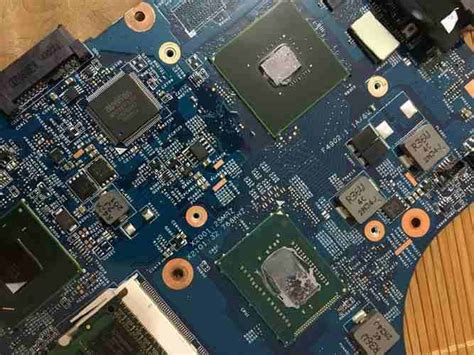
Moreover, the miniaturization of electronic components has become a significant trend in the telecommunications industry. As devices become smaller and more compact, the need for high-density circuit boards that can accommodate complex circuitry in limited space has increased.
Rogers PCBs, with their ability to support fine line widths and tight tolerances, are well-suited for this purpose.
They enable the integration of multiple functions into a single board, reducing the overall size and weight of telecommunications devices. This is particularly beneficial for mobile devices, where space is at a premium and performance cannot be compromised.
Another important application of high-density Rogers PCBs is in the development of high-speed data transmission systems.
As the volume of data being transmitted across networks continues to rise, there is a growing need for systems that can handle large amounts of data quickly and efficiently.
Rogers PCBs, with their excellent electrical properties, facilitate the design of circuits that can support high-speed data transfer without significant signal degradation.
This capability is essential for applications such as fiber-optic communication and high-speed internet services, where data integrity and speed are critical.
In conclusion, high-density Rogers PCB circuits are indispensable in the telecommunications industry, offering solutions that address the challenges of modern communication systems.
Their unique properties make them ideal for a variety of applications, from antennas and RF circuits to miniaturized devices and high-speed data systems. As telecommunications technology continues to advance, the role of Rogers PCBs in enabling these innovations will undoubtedly remain significant, ensuring that communication networks can meet the demands of the future.

Innovations In High Density Rogers PCB Materials And Technologies
In recent years, the field of printed circuit boards (PCBs) has witnessed significant advancements, particularly in the development of high-density Rogers PCB materials and technologies.
These innovations have been driven by the increasing demand for more compact, efficient, and reliable electronic devices. As the electronics industry continues to evolve, the need for PCBs that can support higher frequencies and greater power densities has become paramount.
Consequently, Rogers Corporation, a leader in engineered materials, has been at the forefront of developing high-performance PCB materials that meet these stringent requirements.
One of the key innovations in high-density Rogers PCB materials is the introduction of advanced laminates that offer superior electrical performance.
These laminates are designed to minimize signal loss and ensure signal integrity, which is crucial for high-frequency applications.
By utilizing materials with low dielectric constants and low loss tangents, Rogers has been able to produce PCBs that can operate efficiently at microwave and millimeter-wave frequencies. This is particularly important for applications in telecommunications, aerospace, and defense, where high-frequency performance is critical.
In addition to improved electrical properties, high-density Rogers PCB materials also offer enhanced thermal management capabilities.
As electronic devices become more powerful, they generate more heat, which can adversely affect performance and reliability. To address this challenge, Rogers has developed materials with high thermal conductivity, allowing for efficient heat dissipation. This not only helps in maintaining optimal operating temperatures but also extends the lifespan of the electronic components. By integrating these thermal management features, Rogers PCBs are well-suited for applications in power electronics and automotive industries, where thermal performance is a key consideration.
Moreover, the advancements in high-density Rogers PCB technologies have also focused on miniaturization and increased component density.
As consumer electronics continue to shrink in size, the need for PCBs that can accommodate more components in a smaller footprint has become increasingly important. Rogers has responded to this demand by developing materials that support finer line widths and tighter spacing, enabling the production of more compact and densely populated PCBs. This miniaturization capability is essential for the development of next-generation electronic devices, such as smartphones, wearables, and IoT devices, where space is at a premium.
Furthermore, the integration of advanced manufacturing techniques has played a significant role in the evolution of high-density Rogers PCB technologies.
Techniques such as laser drilling and precision etching have allowed for the creation of intricate circuit patterns and microvias, which are essential for high-density interconnects.
These manufacturing advancements have not only improved the performance and reliability of Rogers PCBs but have also reduced production costs, making them more accessible to a wider range of industries.
In conclusion, the innovations in high-density Rogers PCB materials and technologies have been instrumental in meeting the growing demands of the electronics industry.
By focusing on improved electrical performance, enhanced thermal management, miniaturization, and advanced manufacturing techniques, Rogers has positioned itself as a leader in the development of high-performance PCBs.
As technology continues to advance, it is expected that Rogers will continue to innovate, providing solutions that enable the next generation of electronic devices to achieve new levels of performance and reliability.


